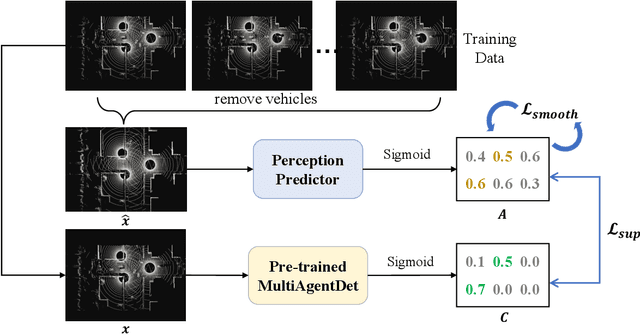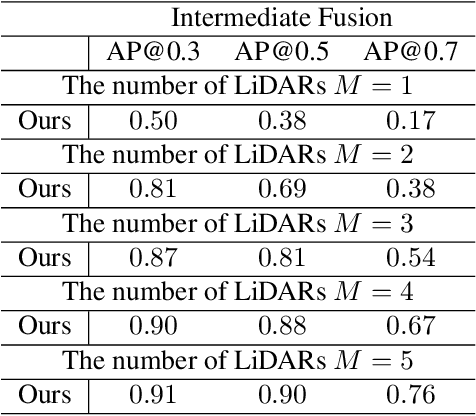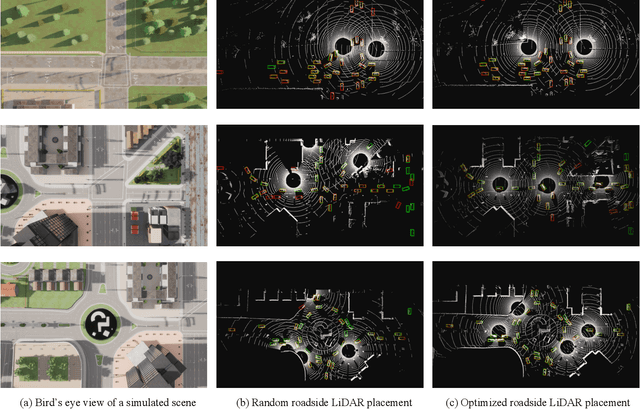Wentao Jiang
REX-RAG: Reasoning Exploration with Policy Correction in Retrieval-Augmented Generation
Aug 12, 2025Abstract:Reinforcement learning (RL) is emerging as a powerful paradigm for enabling large language models (LLMs) to perform complex reasoning tasks. Recent advances indicate that integrating RL with retrieval-augmented generation (RAG) allows LLMs to dynamically incorporate external knowledge, leading to more informed and robust decision making. However, we identify a critical challenge during policy-driven trajectory sampling: LLMs are frequently trapped in unproductive reasoning paths, which we refer to as "dead ends", committing to overconfident yet incorrect conclusions. This severely hampers exploration and undermines effective policy optimization. To address this challenge, we propose REX-RAG (Reasoning Exploration with Policy Correction in Retrieval-Augmented Generation), a novel framework that explores alternative reasoning paths while maintaining rigorous policy learning through principled distributional corrections. Our approach introduces two key innovations: (1) Mixed Sampling Strategy, which combines a novel probe sampling method with exploratory prompts to escape dead ends; and (2) Policy Correction Mechanism, which employs importance sampling to correct distribution shifts induced by mixed sampling, thereby mitigating gradient estimation bias. We evaluate it on seven question-answering benchmarks, and the experimental results show that REX-RAG achieves average performance gains of 5.1% on Qwen2.5-3B and 3.6% on Qwen2.5-7B over strong baselines, demonstrating competitive results across multiple datasets. The code is publicly available at https://github.com/MiliLab/REX-RAG.
AnesBench: Multi-Dimensional Evaluation of LLM Reasoning in Anesthesiology
Apr 03, 2025Abstract:The application of large language models (LLMs) in the medical field has gained significant attention, yet their reasoning capabilities in more specialized domains like anesthesiology remain underexplored. In this paper, we systematically evaluate the reasoning capabilities of LLMs in anesthesiology and analyze key factors influencing their performance. To this end, we introduce AnesBench, a cross-lingual benchmark designed to assess anesthesiology-related reasoning across three levels: factual retrieval (System 1), hybrid reasoning (System 1.x), and complex decision-making (System 2). Through extensive experiments, we first explore how model characteristics, including model scale, Chain of Thought (CoT) length, and language transferability, affect reasoning performance. Then, we further evaluate the effectiveness of different training strategies, leveraging our curated anesthesiology-related dataset, including continuous pre-training (CPT) and supervised fine-tuning (SFT). Additionally, we also investigate how the test-time reasoning techniques, such as Best-of-N sampling and beam search, influence reasoning performance, and assess the impact of reasoning-enhanced model distillation, specifically DeepSeek-R1. We will publicly release AnesBench, along with our CPT and SFT training datasets and evaluation code at https://github.com/MiliLab/AnesBench.
Benchmarking Reasoning Robustness in Large Language Models
Mar 06, 2025Abstract:Despite the recent success of large language models (LLMs) in reasoning such as DeepSeek, we for the first time identify a key dilemma in reasoning robustness and generalization: significant performance degradation on novel or incomplete data, suggesting a reliance on memorized patterns rather than systematic reasoning. Our closer examination reveals four key unique limitations underlying this issue:(1) Positional bias--models favor earlier queries in multi-query inputs but answering the wrong one in the latter (e.g., GPT-4o's accuracy drops from 75.8 percent to 72.8 percent); (2) Instruction sensitivity--performance declines by 5.0 to 7.5 percent in the Qwen2.5 Series and by 5.0 percent in DeepSeek-V3 with auxiliary guidance; (3) Numerical fragility--value substitution sharply reduces accuracy (e.g., GPT-4o drops from 97.5 percent to 82.5 percent, GPT-o1-mini drops from 97.5 percent to 92.5 percent); and (4) Memory dependence--models resort to guesswork when missing critical data. These findings further highlight the reliance on heuristic recall over rigorous logical inference, demonstrating challenges in reasoning robustness. To comprehensively investigate these robustness challenges, this paper introduces a novel benchmark, termed as Math-RoB, that exploits hallucinations triggered by missing information to expose reasoning gaps. This is achieved by an instruction-based approach to generate diverse datasets that closely resemble training distributions, facilitating a holistic robustness assessment and advancing the development of more robust reasoning frameworks. Bad character(s) in field Abstract.
Dynamic Parallel Tree Search for Efficient LLM Reasoning
Feb 22, 2025Abstract:Tree of Thoughts (ToT) enhances Large Language Model (LLM) reasoning by structuring problem-solving as a spanning tree. However, recent methods focus on search accuracy while overlooking computational efficiency. The challenges of accelerating the ToT lie in the frequent switching of reasoning focus, and the redundant exploration of suboptimal solutions. To alleviate this dilemma, we propose Dynamic Parallel Tree Search (DPTS), a novel parallelism framework that aims to dynamically optimize the reasoning path in inference. It includes the Parallelism Streamline in the generation phase to build up a flexible and adaptive parallelism with arbitrary paths by fine-grained cache management and alignment. Meanwhile, the Search and Transition Mechanism filters potential candidates to dynamically maintain the reasoning focus on more possible solutions and have less redundancy. Experiments on Qwen-2.5 and Llama-3 with Math500 and GSM8K datasets show that DPTS significantly improves efficiency by 2-4x on average while maintaining or even surpassing existing reasoning algorithms in accuracy, making ToT-based reasoning more scalable and computationally efficient.
LeMeViT: Efficient Vision Transformer with Learnable Meta Tokens for Remote Sensing Image Interpretation
May 16, 2024



Abstract:Due to spatial redundancy in remote sensing images, sparse tokens containing rich information are usually involved in self-attention (SA) to reduce the overall token numbers within the calculation, avoiding the high computational cost issue in Vision Transformers. However, such methods usually obtain sparse tokens by hand-crafted or parallel-unfriendly designs, posing a challenge to reach a better balance between efficiency and performance. Different from them, this paper proposes to use learnable meta tokens to formulate sparse tokens, which effectively learn key information meanwhile improving the inference speed. Technically, the meta tokens are first initialized from image tokens via cross-attention. Then, we propose Dual Cross-Attention (DCA) to promote information exchange between image tokens and meta tokens, where they serve as query and key (value) tokens alternatively in a dual-branch structure, significantly reducing the computational complexity compared to self-attention. By employing DCA in the early stages with dense visual tokens, we obtain the hierarchical architecture LeMeViT with various sizes. Experimental results in classification and dense prediction tasks show that LeMeViT has a significant $1.7 \times$ speedup, fewer parameters, and competitive performance compared to the baseline models, and achieves a better trade-off between efficiency and performance.
Data Augmentation in Human-Centric Vision
Mar 13, 2024Abstract:This survey presents a comprehensive analysis of data augmentation techniques in human-centric vision tasks, a first of its kind in the field. It delves into a wide range of research areas including person ReID, human parsing, human pose estimation, and pedestrian detection, addressing the significant challenges posed by overfitting and limited training data in these domains. Our work categorizes data augmentation methods into two main types: data generation and data perturbation. Data generation covers techniques like graphic engine-based generation, generative model-based generation, and data recombination, while data perturbation is divided into image-level and human-level perturbations. Each method is tailored to the unique requirements of human-centric tasks, with some applicable across multiple areas. Our contributions include an extensive literature review, providing deep insights into the influence of these augmentation techniques in human-centric vision and highlighting the nuances of each method. We also discuss open issues and future directions, such as the integration of advanced generative models like Latent Diffusion Models, for creating more realistic and diverse training data. This survey not only encapsulates the current state of data augmentation in human-centric vision but also charts a course for future research, aiming to develop more robust, accurate, and efficient human-centric vision systems.
Realistic Rainy Weather Simulation for LiDARs in CARLA Simulator
Dec 20, 2023



Abstract:Employing data augmentation methods to enhance perception performance in adverse weather has attracted considerable attention recently. Most of the LiDAR augmentation methods post-process the existing dataset by physics-based models or machine-learning methods. However, due to the limited environmental annotations and the fixed vehicle trajectories in the existing dataset, it is challenging to edit the scene and expand the diversity of traffic flow and scenario. To this end, we propose a simulator-based physical modeling approach to augment LiDAR data in rainy weather in order to improve the perception performance of LiDAR in this scenario. We complete the modeling task of the rainy weather in the CARLA simulator and establish a pipeline for LiDAR data collection. In particular, we pay special attention to the spray and splash rolled up by the wheels of surrounding vehicles in rain and complete the simulation of this special scenario through the Spray Emitter method we developed. In addition, we examine the influence of different weather conditions on the intensity of the LiDAR echo, develop a prediction network for the intensity of the LiDAR echo, and complete the simulation of 4-feat LiDAR point cloud data. In the experiment, we observe that the model augmented by the synthetic data improves the object detection task's performance in the rainy sequence of the Waymo Open Dataset. Both the code and the dataset will be made publicly available at https://github.com/PJLab-ADG/PCSim#rainypcsim.
DUSA: Decoupled Unsupervised Sim2Real Adaptation for Vehicle-to-Everything Collaborative Perception
Oct 12, 2023Abstract:Vehicle-to-Everything (V2X) collaborative perception is crucial for autonomous driving. However, achieving high-precision V2X perception requires a significant amount of annotated real-world data, which can always be expensive and hard to acquire. Simulated data have raised much attention since they can be massively produced at an extremely low cost. Nevertheless, the significant domain gap between simulated and real-world data, including differences in sensor type, reflectance patterns, and road surroundings, often leads to poor performance of models trained on simulated data when evaluated on real-world data. In addition, there remains a domain gap between real-world collaborative agents, e.g. different types of sensors may be installed on autonomous vehicles and roadside infrastructures with different extrinsics, further increasing the difficulty of sim2real generalization. To take full advantage of simulated data, we present a new unsupervised sim2real domain adaptation method for V2X collaborative detection named Decoupled Unsupervised Sim2Real Adaptation (DUSA). Our new method decouples the V2X collaborative sim2real domain adaptation problem into two sub-problems: sim2real adaptation and inter-agent adaptation. For sim2real adaptation, we design a Location-adaptive Sim2Real Adapter (LSA) module to adaptively aggregate features from critical locations of the feature map and align the features between simulated data and real-world data via a sim/real discriminator on the aggregated global feature. For inter-agent adaptation, we further devise a Confidence-aware Inter-agent Adapter (CIA) module to align the fine-grained features from heterogeneous agents under the guidance of agent-wise confidence maps. Experiments demonstrate the effectiveness of the proposed DUSA approach on unsupervised sim2real adaptation from the simulated V2XSet dataset to the real-world DAIR-V2X-C dataset.
Optimizing the Placement of Roadside LiDARs for Autonomous Driving
Oct 11, 2023



Abstract:Multi-agent cooperative perception is an increasingly popular topic in the field of autonomous driving, where roadside LiDARs play an essential role. However, how to optimize the placement of roadside LiDARs is a crucial but often overlooked problem. This paper proposes an approach to optimize the placement of roadside LiDARs by selecting optimized positions within the scene for better perception performance. To efficiently obtain the best combination of locations, a greedy algorithm based on perceptual gain is proposed, which selects the location that can maximize the perceptual gain sequentially. We define perceptual gain as the increased perceptual capability when a new LiDAR is placed. To obtain the perception capability, we propose a perception predictor that learns to evaluate LiDAR placement using only a single point cloud frame. A dataset named Roadside-Opt is created using the CARLA simulator to facilitate research on the roadside LiDAR placement problem.
Towards Vehicle-to-everything Autonomous Driving: A Survey on Collaborative Perception
Aug 31, 2023



Abstract:Vehicle-to-everything (V2X) autonomous driving opens up a promising direction for developing a new generation of intelligent transportation systems. Collaborative perception (CP) as an essential component to achieve V2X can overcome the inherent limitations of individual perception, including occlusion and long-range perception. In this survey, we provide a comprehensive review of CP methods for V2X scenarios, bringing a profound and in-depth understanding to the community. Specifically, we first introduce the architecture and workflow of typical V2X systems, which affords a broader perspective to understand the entire V2X system and the role of CP within it. Then, we thoroughly summarize and analyze existing V2X perception datasets and CP methods. Particularly, we introduce numerous CP methods from various crucial perspectives, including collaboration stages, roadside sensors placement, latency compensation, performance-bandwidth trade-off, attack/defense, pose alignment, etc. Moreover, we conduct extensive experimental analyses to compare and examine current CP methods, revealing some essential and unexplored insights. Specifically, we analyze the performance changes of different methods under different bandwidths, providing a deep insight into the performance-bandwidth trade-off issue. Also, we examine methods under different LiDAR ranges. To study the model robustness, we further investigate the effects of various simulated real-world noises on the performance of different CP methods, covering communication latency, lossy communication, localization errors, and mixed noises. In addition, we look into the sim-to-real generalization ability of existing CP methods. At last, we thoroughly discuss issues and challenges, highlighting promising directions for future efforts. Our codes for experimental analysis will be public at https://github.com/memberRE/Collaborative-Perception.
 Add to Chrome
Add to Chrome Add to Firefox
Add to Firefox Add to Edge
Add to Edge